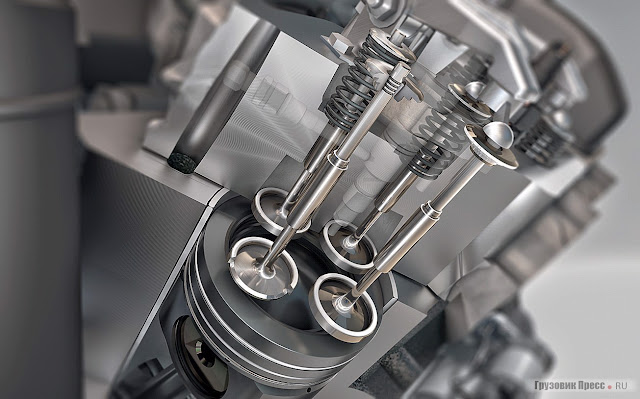Engine valves are mechanical components that allow or restrict fluid or gas flow to and from the combustion chambers or cylinders during engine operation. During engine operation, fluid or gas flow to and from the combustion chambers or cylinders must be allowed or restricted.
This article provided an overview of types of engine valves, including what they are, key terminology, how they function, valve operation, materials, types, and specifications.
All Engine Valve
During engine operation, fluid or gas flow to and from the combustion chambers or cylinders must be allowed or restricted. Internal combustion engines, the main mechanical components of engine valves, accomplish this.
The valve is made up primarily of a stem and ahead. A fillet leads the seat in the valve head to match the machining of a valve seat. A valve spring acts as a seating pressure against which the valve stem must move. The engine's mechanical elements operate the valve to generate the force required for the stem to move against the seating pressure. The valve stem connects these mechanical elements to the valve.
Engine Valves' Role In Engine Operation
Engine valves are classified into two types based on their involvement in Engine Operation:
- Intake valves
- Exhaust valves
The intake valves must be opened for the air/fuel mixture to flow into the engine cylinders for compression and ignition. In addition, the exhaust valves must be opened to allow exhaust gases to be expelled after the combustion process, which is triggered by ignition.
The camshaft of the engine drives the motion of the engine valves. The linear motion of the valve is generated by a series of lobes or cams located in the camshaft as the camshaft rotates.
Valve Movement In Engines
The camshaft of the engine drives the motion of the engine valves. The linear motion of the valve is generated by a series of lobes or cams located in the camshaft as the camshaft rotates.
The accurate clearance between the valve stem and the rocker arm or cam keeps the valves in good working order. An ample valve clearance causes the valves to open slowly and close quickly—too little valve clearance results in incomplete valve closing, reducing engine performance, and increasing noise.
Specifications For Engine Valve
The parameters listed below define typical engine valves. Keep in mind that this information is provided for informative purposes only and that variations in the parameters used to specify engine valves might exist from manufacturer to manufacturer. Buyers are better equipped to discuss their specific needs with engine valve suppliers if they understand the specifications.
- The diameter of the custom made engine valves stem is the stem diameter.
- The distance between the stem tip and the valve head is the stem length.
- Seat angle – the angle cut into the valve head's seat, measured in angular degrees, with typical values ranging from 20o to 60o.
- Valve materials – describes the material used in the valve's fabrication.
- Coatings – refers to any coatings or surface treatments applied to the valve's base material, such as chrome plating, nitride, PVD, or ceramics.

Comments
Post a Comment